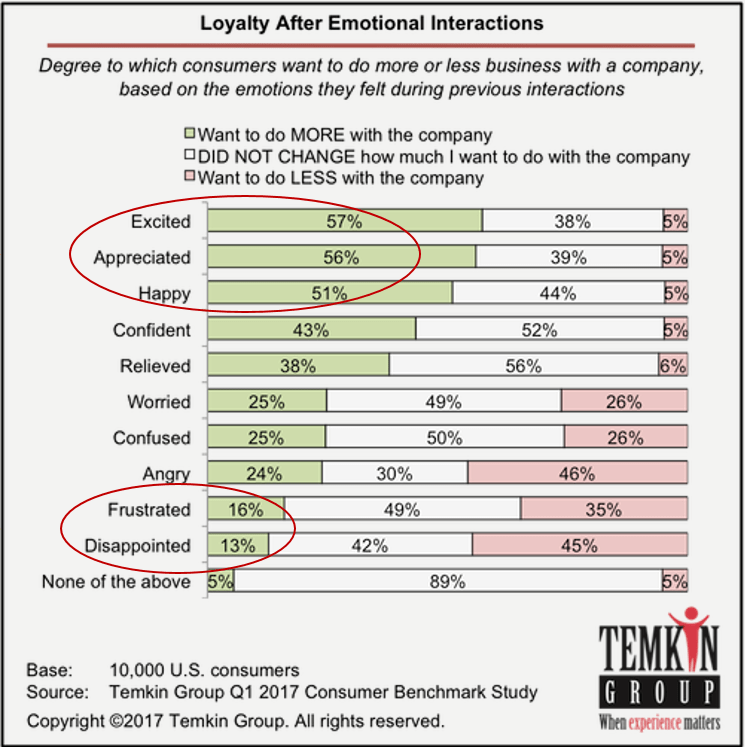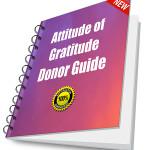
If you want gifts, you must give them
If you don’t build donor loyalty over time, you’re really missing out on the long-term value of every donor you bring in. And, guess what else?
You’re working too hard.
Donors come in. Donors go out. Donors come in. Donors go out.
One-time gifts are here today, gone tomorrow.
It’s like being on a non-stop treadmill. Just exhausting!
But there’s an easy way to catch your breath, and even begin to enjoy breathing again.
Instead of continuing on as a transactional fundraiser, become a donor experience transformist!
What a Transactional Fundraiser Does
- Focuses on acquisition of new donors.
The lion’s share of time is spent writing appeals, building lists and project managing donor acquisition fundraising campaigns. It may seem like a good idea at the time, but it’s short-sighted. It doesn’t build long-term, lifetime value.
- Warehouses donors in a database.
Gift data is entered into a database and checked off the list as “done.” Little or no effort is made to get to know this donor better. I call this treating your donors like gumballs.
You never even think about that gumball again. You probably can’t even remember what color it was. You’re off hunting down your next snack.
- Sends a generic thank you email or letter.
What if you received the same thank you letter from your nephew every year after his birthday? “Thanks for the gift. It meant a lot.” No mention of what it was, or how they plan to use it, or how it was exactly what they needed. No mention that you’d given an extra special gift this year in honor of their “big” birthday. Or that you’d earmarked it for a special purpose. You’d only know they’d received it, but you’d get no real positive emotional pay-off.
- Turns most future communications with the donor over to the marketing department.
It’s the job of the fundraiser to deliver donor love. Most marketing staff don’t think of their job this way. They think about branding. And sales. And what the organization wants/needs to tell their constituents – rather than what donors want to hear. If all your donor hears after receiving the initial thank you is a litany of “We do this;” “Our organization needs that;” “We won this award;” “We started an awesome new program,” and so forth, they’re not going to feel appreciated and happy. They’re going to feel lectured.
- Begins planning the next direct mail letter and/or fundraising event designed to bring in more new donors.
According to the 2016 Fundraising Effectiveness Project study, the average new donor retention rate is just 23%. That means, by the end of the year, your “bucket” of donors is less than a fourth full. You can keep trying to fill your bucket up to less than a quarter of capacity every year until the end of time, and it still won’t be enough to nourish your cause. So… continuing to prioritize acquisition at the expense of retention and upgrade strategies is a recipe for failure.
The Agony of Treadmill Fundraising
Treadmill fundraising is bad for both the proverbial goose and gander.
It doesn’t make your donor happy, because you give them no long-term satisfaction or positive emotional payoff.
It doesn’t make you happy, because you get no personal connection or long-term fulfillment.
It’s just a short-term, mini high. Or high five. Then it’s over.
And back to the coal mines.
There’s got to be a better way!
And there is.
It’s a way that will fill your bucket up faster.
It will fill your donor’s cup with joy.
And it will fill your heart with gladness.
For your job will have been well done, and your donors well served.
“Fundraising is servant to philanthropy.” Hank Rosso, Founder, The Fundraising School
What a Donor Experience Transformist Does
- Facilitates philanthropy.
Asking for money is transactional. Facilitating philanthropy is making it possible for the “love of humankind” (the definition of philanthropy from the Greek) to flow. Philanthropy facilitators are guides who take donors on a journey that reveals to them their passion. And the way they can fulfill their existential quest for meaning.
“Philanthropy is the gentle art of teaching the joy of giving.” Hank Rosso.
- Builds loyalty.
Loyalty builds as relationships – personal connections — are built. One of the ways the commercial and social benefit marketing/sales continuums differ is in the ongoing connection they have/don’t have. When a customer buys a commercial product, they’re able to enjoy it over time. Buy a 12-pack of cola; you’re reminded daily of how much you enjoy it. Make a philanthropic gift, and you’re done. Unless… someone at the charity makes a personal connection, reaching out to let you know what a hero you are. And they do this multiple times. Otherwise, you don’t get the ongoing enjoyment out of giving that you deserve. And that will inspire you to repeat this behavior.
- Offers token ‘gifts’.
I should have a bumper sticker made that says: “If you want gifts, you must give them.” And I don’t mean engraved plates or tote bags. Not “stuff.” Rather, thoughtful gestures that show your donor you know them, and you’re thinking of them. My Creative Ways to Thank Your Donors and Keep Them for Life e-book suggests 62 different ways to do this. But how about simple gifts of content like “How To” lists, Recommended Readings, Inspirational Quotes or Favorite Recipes?
- Creates emotional donor experiences.
This is really another type of gift. I had a boss once who informally called me the “Director of Donor Experiences.” She understood that what donors yearn for is a tangible connection to the beneficiaries of their philanthropy. Seeing is believing. So I took them on field trips. I created special hands-on volunteer activities just for them. I brought clients in to talk at meetings and events. I read thank you notes from clients to them, or slipped a few into their thank you letters. I invited them to write letters to the editor or offer testimonials as community meetings. I made them the voice of our organization, and let the experience really sink in.
Folks, emotion is super important! The Temkin Group, which specializes in customer loyalty in the commercial sector, has labelled 2016 The Year of Emotion and operationalizing emotion is one of their 2017 CX trends. A recent study they conducted found that positive emotions drive loyalty. The top three emotions were excited, appreciated and happy. At the bottom were disappointed and frustrated. How do you leave your donors feeling after they interact with you?

- Delivers happiness.
When push comes to shove, this is the existential business donor-centered fundraisers (or ‘philanthropy facilitators’ or ‘donor experience transformists’) are in. To help people in their quest for meaning. To make donors feel like heroes by showing them the impact of their philanthropy. To give them the credit they deserve by repeatedly showering them with heartfelt gratitude. And donor experience transformists work on feeling the gratitude by keeping a Donor Gratitude Journal and/or engaging in numerous other acts of thoughtful gratitude throughout the course of the year. Gratitude becomes a thoughtful, intentional practice – and one that permeates the entire organization.
Build a Happiness Delivery Plan
Sadly, giving is too seldom its own reward. Donors need you to complete the value-for-value exchange that is at the core of all fundraising.
The donor gives your organization something of value (treasure). Giving happiness is the value you offer in return.
This is an active, intentional practice. It’s not sitting back and assuming the donor will find some satisfaction on their own (e.g., fulfillment of a moral or religious obligation; assuagement of guilt; paying someone back, etc.). It’s you, doing your job, helping your donors along the pathway to passionate philanthropy.
Donor experience transformists have their head in the game. The right game. The donor retention and loyalty game. The “we’re all in this together” game.
And when your head is in the right game, everyone’s a winner.
“We are, a global society of people that are unhappy (or think they could be happier) in life. Simply put, everyone wants to be a part of something bigger than ourselves. To have a higher purpose. We believe by prioritizing happiness in work and life, together we can create change in the world more than we ever thought possible.” – Deliveringhappiness.com
Want to learn more about becoming a donor experience transformist?

Your Donor Retention Bible – at a “Bargain Bundle” price.
Get your “Attitude of Gratitude” on with my 6-volume Donor Retention “Bargain Bundle.” Six useful companion e-Guides filled with actionable tips to get you off that awful treadmill and start building lasting donor relationships. Folks have told me they keep this as a reference, and it’s become their ‘Donor Retention Bible.” By the way, if you’ve not yet enrolled in ‘Clairification School,’ please do that first. You’ll save so much on just this Guidebook alone, that it’s almost like getting Clairification School tuition — for a full year — for free.
-
Pingback: Back to ‘A, B, C’ Nonprofit Major Gift Program Essentials - NonProfit PRO
-
Pingback: Top 10 Ways to Upgrade Nonprofit Donors
-
Pingback: Top 7 Drivers of Donor Love and Loyalty
-
Pingback: Key Donor Love Strategies to Keep Nonprofit Supporters Loyal





